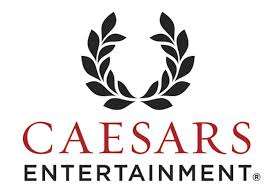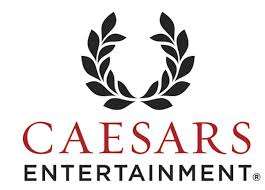Caesars Reaches Partial Agreement with Second-Lien Bondholders as NY Lawsuit Tossed
Caesars Entertainment’s bankrupt operating unit, Caesars Entertainment Operating Company (CEOC), was the focal point of a series of events yesterday surrounding the unit’s ongoing bankruptcy plans and deep disputes with aggrieved creditors.
 In one major development, CEOC announced that it has reached a tentative restructuring agreement with what a corporate release described as a “significant amount” of the holders of the company’s second-lien notes, who own a sizable share of the $18 billion in debt that Caesars is seeking to shed through CEOC’s Chapter 11 bankruptcy, filed back in January.
In one major development, CEOC announced that it has reached a tentative restructuring agreement with what a corporate release described as a “significant amount” of the holders of the company’s second-lien notes, who own a sizable share of the $18 billion in debt that Caesars is seeking to shed through CEOC’s Chapter 11 bankruptcy, filed back in January.
The actual amount of the settlement is small, relative to the overall debt with which the CEOC unit is saddled, but signifies that ongoing negotiations are continuing in what has developed into a drawn-out legal and financial struggle. News of the partial agreement came after a New York state judge tossed out a lawsuit brought last August by Caesars against several of the second-lien bondholders, in which Caesars claimed it was damaged by false claims and payment demands made by the debtholder group. Other legal actions connected to the CEOC bankruptcy, including actions brought by the aggrieved debtholders, remain active.
The second-line group collectively holds over $5 billion in corporate debt, and since its claims fell behind those of first-lien creditors in the bankruptcy pecking order, the group was scheduled to receive next to nothing under the CEOC unit’s initial bankruptcy plan. Under the new plan, second-lien debtholders who sign on will receive pro-rated shares of $200 million worth of convertible notes in parent company Caesars Entertainment, with eligibility to receive a second $200 million worth of convertibles if the plan is approved by a majority of the second-lien group.
A Bloomberg update pegs the total size of the group agreeing to the revised Caesars plan at about 30% of the overall second-lien group, by ownership volume. Among the debtholders named as part of the new agreement are Paulson & Co., Canyon Partners and Soros Fund Management. None of the debtholders, nor Caesars itself, commented to media about the latest developments. Caesars needs to convince at least another 20% of the second-lien group, weighted by debt, to join in the new deal to make it valid.
It’s likely that Caesars still has significant work to do to make that happen. Bloomberg analyst Julia Winters, commenting on the new proposal, said, “From the second-lien perspective, anything is better,” a reference to how bad the original deal was from those debtholder’s perspective.
The complicated agreement also calls for the second-lien group to receive a total of 5% equity in a to-be-formed property-holding company, referred to as “PropCo,” that is slated to emerge from the bankruptcy proceedings.
Whether a majority of the second-line debtholders goes along with the new proposal remains to be seen, though the share price of parent company Caesars Entertainment (CZR) surged overnight on the latest developments. CZR stock started Tuesday’s trading by surging nearly 25%, to more than $8 a share, before giving back some of that gain.
Finding a way out from under its mountain of debt is mandatory for the long-term survival of Caesars, with its overall restructuring and CEOC-unit bankruptcy key elements of the company’s plan. Caesars (then known as Harrah’s) was purchased back in 2006 by Apollo Global Management and TPG Capital in a highly-leveraged deal, just before the bursting of last decade’s housing and investment bubble. For Caesars, that series of events proved disastrous, and the company has struggled under a debt load that today is nearly $30 billion deep.
More legal developments are on tap. A key court hearing tomorrow in a separate lawsuit — this one brought by another group of the aggrieved second-lien shareholders — will have significant impact on whether the bankruptcy itself can move forward. The second-lien group has alleged that Caesars shuffled most of its debt and most of its underperforming properties into the CEOC unit as a way of dumping off most of its debt onto the rights-limited second-lien group.
Should an Illinois judge allow the second-lien group’s lawsuit to continue, the entirety of Caesars’ operations could come into play under a larger bankruptcy filing, perhaps even including parent company Caesars Entertainment itself. At that point, all of Caesars’ brands and divisions would operate under Chapter 11 protection, even including such disparate offerings as the World Series of Poker and Caesars Interactive, the company’s online business group.


















COMMENTS